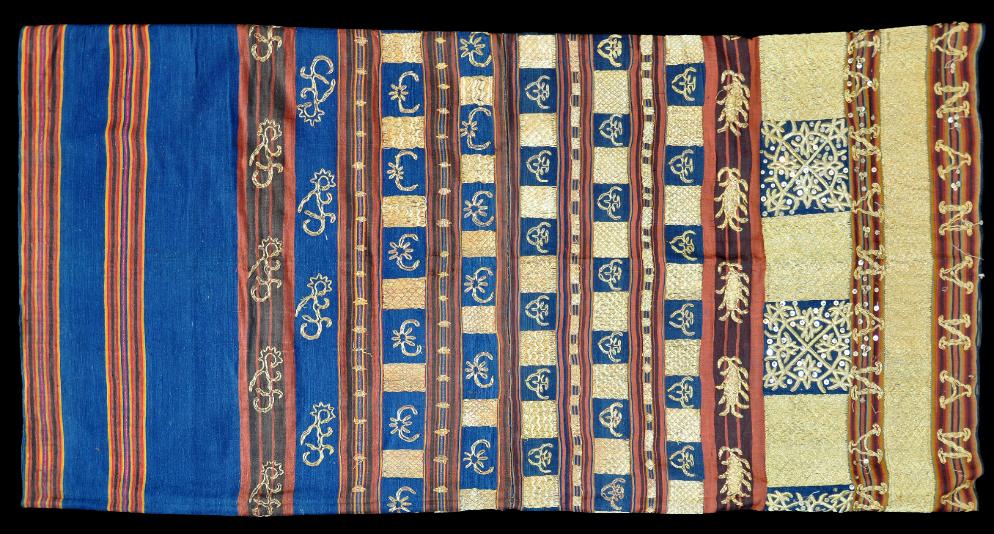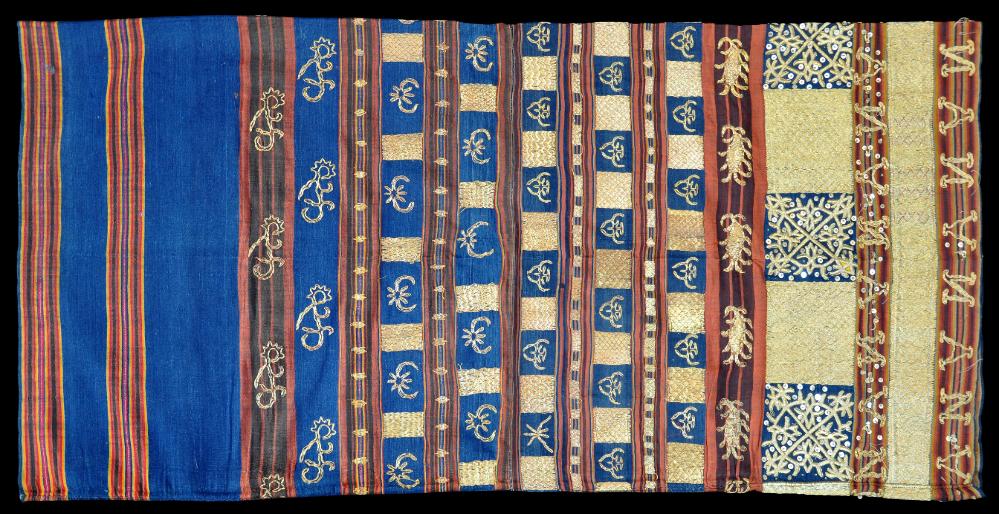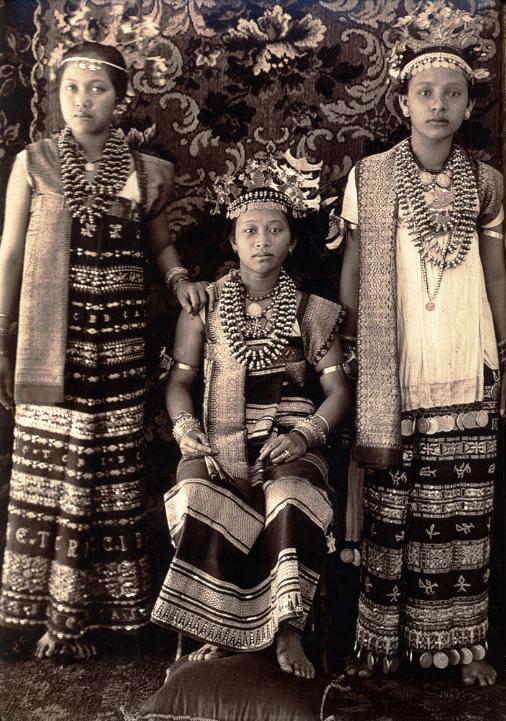
Lampung Tapis Textile with Gold, Sumatra, Indonesia
Woman’s Ceremonial Skirt (Tapis)
Pubian People, Central Lampung, South Sumatra, Indonesia
19th century
length: 126cm, width: 63cm (these are the dimensions for one side of the double-sided skirt)
This tapis (ceremonial skirt) is from the Pubian people of central Lampung in South Sumatra. It remains closed and sewn as a skirt (rather than having been opened for display purposes).
It comprises silk-cotton dyed with blue, purple, mustard-yellow and orange dyes and is densely embroidered and couched with bands of metallic thread wrapped in gold, applique work including metallic sequins, and two bands of couched lettering. As such, it is one of a rare group of
tapis textiles that have been embroidered with lettering and words.
Another aspect that makes this
tapis particularly special is the use of small applique shapes, probably of card, which have been covered in metallic thread and sewn into the design. These add to the relief of the surface but also to the skirt’s weight.
Maxwell (2003a, p. 339) illustrates an Abung
tapis embroidered with a band of Abung jawi (localised Arabic) script. Totton (2009, p. 84) illustrates a tapis which has seven registers of lettering in Romanised script.
The copious use of gilded metallic thread makes the skirt heavy – almost too heavy to be worn comfortably, and so such skirts were worn for only brief periods and for ceremonial occasions.
See Brinkgreve & Stuart-Fox (2013, p. 115) for an example, attributed to the 19th century, and which employs similar motifs.
Among the motifs are large round snowflake-like motifs which are the
kibang motif, based on a slice of breadfruit (Brinkgreve & Stuart-Fox, 2013, p. 113), as well as stylised animal forms and what might be stylised dragon forms, suggesting earlier Chinese influence.
The condition for this piece is excellent, particularly given its age and the material from which it is made. There are some loose threads but the losses are minor. The condition and styling are of museum-quality.
References
Brinkgreve, F., & D.J. Stuart-Fox (eds), Living with Indonesian Art: The Frits Liefkes Collection, Rijksmuseum Volkenkunde, 2013.
Maxwell, R.,
Sari to Sarong: Five Hundred Years of Indians and Indonesian Textile Exchange, NGA, 2003a.
Maxwell, R.,
Textiles of Southeast Asia: Tradition, Trade and Transformation, Periplus, 2003b.
Totton, M.L.,
Wearing Wealth and Styling Identity: Tapis from Lampung, South Sumatra, Indonesia, Hood Museum of Art, 2009.
Vanderstraete, A.,
Magie van de Vrouw: Weefsels en Sieraden uit de Gordel van Smaragd, (The Magic of Women), Wereldmuseum, 2012.
Provenance
Acquired in the UK, from the estate collection of Dr George Yuille Caldwell (1924-2016). Dr Caldwell, an English-born physician moved to Singapore in the 1950s, from where he built up a collection of Indonesian textiles and other ethnographica.
Inventory no.: 3813
SOLD



In this photograph, taken in central Lampung, in 1901, the woman on the left wears a tapis that includes bands of script.

